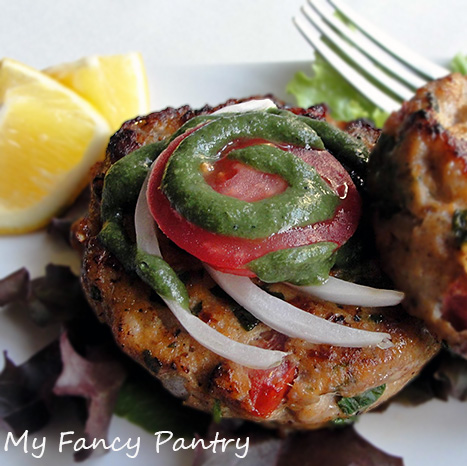We, Americans, eat a lot of burgers. Hamburgers, turkey burgers, veggie burgers…they’re all an important part of our culture. We love pretty much anything if it’s formed into a patty, placed on a bun, and slathered with toppings. …and who can blame us? Burgers are good!
We also love kababs. Meat, veggies, fruit–it doesn’t matter. If it’s been skewered or is served on a stick, we’ll eat it, and we’ll savor every last bite.
Now, things are really going to get interesting. I’d like to introduce you all to the spicy, tender chapli kabab!
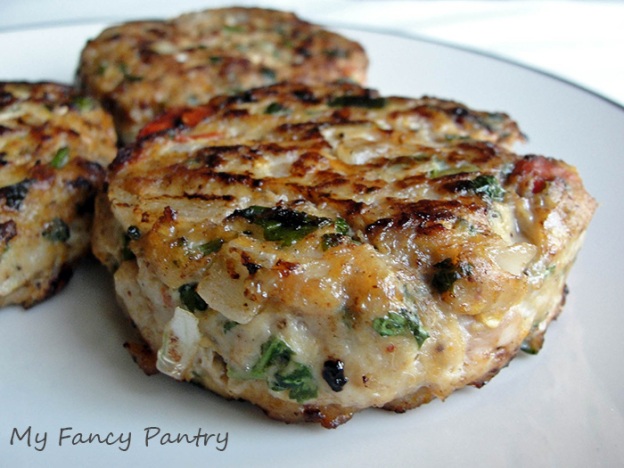
Chicken Chapli Kabab
It’s a kabab, but it’s not served on a stick. It’s also a burger, yet it’s not on a bun.
The first time I tried traditional kababs, I’ve got to admit, I was confused. They weren’t hunks of meat or vegetables threaded onto a skewer. Heck, they weren’t even grilled! Instead they were made of ground meat, studded with spices and little bits of vegetables. They were tender, juicy, and quite unlike anything I’d had before. I was hooked.
This version of kabab, the chapli kabab, is very popular in both Pakistan and Afghanistan. They’re usually made with minced beef or lamb, but can also be made with chicken. The kababs get their name because of the way they’re shaped. Piyush tried to convince me that they were called chapli kababs because they were flat like chappals (sandals), which is sort of true.

A pair of Piyush’s chappals
In actuality, they’re not named after the chappals, although it was a good guess. They’re actually called chapli kababs simply because they’re flat. The word chapli is derived from a Pashto (spoken in Pakistan and Afghanistan) word, chaprikh, also meaning flat.
Piyush and I first tasted the incredible chapli kababs at a Pakistani restaurant here, in Rochester. The restaurant is called Kababs (if anyone is interested), and serves fabulous home-style food. The food is very, very similar to authentic Indian dishes–especially dishes served in West Bengal (although the spices are a little milder, and the curries are definitely not as hot). It’s cheap, and it’s good.
My chapli kababs were an even match, taste-wise, to what we ate at the restaurant. The only difference is that I made mine a little thicker than they should be.
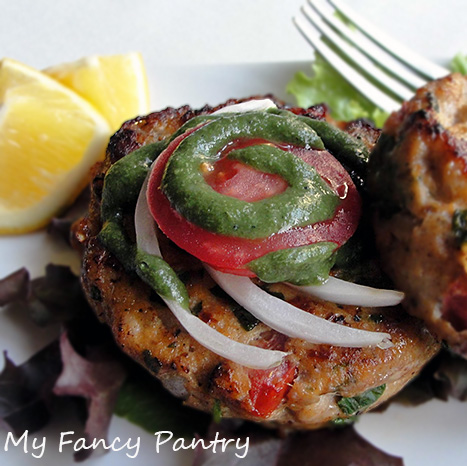
Pakistani-style Chapli Kabab topped with raw onion, tomato slice and mint/corriander chutney
I plan on making these again and again. I can’t wait to grill these and serve them as alternatives to hamburgers at our next bbq. Not only do they pack some incredible flavor, but they’re also pretty healthy. Each kabab is around 140 calories, and it’s full of veggies.
I made the kababs using a pound of skinless, boneless chicken thighs. I tossed the meat in my food processor and processed it until it was a smooth, paste-like consistency. I then chopped a whole bunch of veggies: tomatoes, onion, green onion, serrano chilies, garlic, ginger, corriander…and tossed them all in with the meat.
I mixed everything really well, making sure to squeeze the juices from the tomatoes as I mixed–this helped keep the meat juicy and flavorful (I think…). I added freshly ground corriander seeds (not ground to a powder), ground cumin seeds, dried pomegranate seeds, a little besan flour (chickpea) and even some crushed red pepper. I seasoned the meat with salt and black pepper, and then formed into patties.
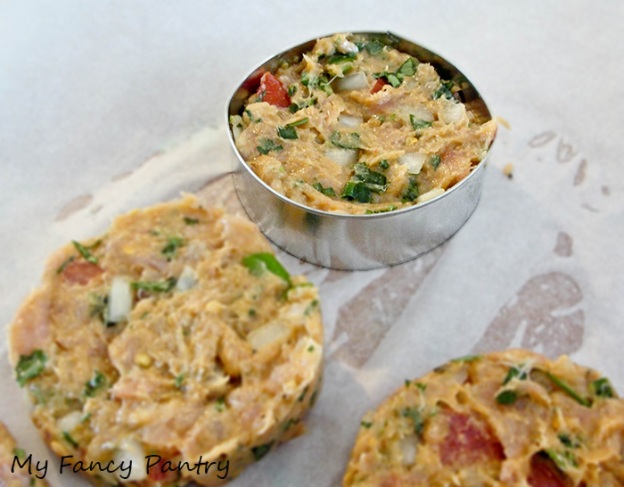
I used a pastry cutter to make the patties, mostly because I wanted them to be the same shape and size. Also because I didn’t want to get my hands dirty after I had just washed them. …What kind of cook am I?!
After the patties were formed, I tossed them in the freezer for about 15 minutes. You don’t have to do this, I just find it helps hold the patties together a little better. In fact, it seemed to work so well, I didn’t have a single patty fall apart on me. Surprising, considering how much other stuff I had tossed in with the meat.
When I was ready to cook the patties, I put a little oil in a non-stick pan–just enough to coat the bottom.

If you’re trying to avoid oil, you could just use a non-stick cooking spray. It should do a similar job, although you might not get that beautiful golden sear on the patties.
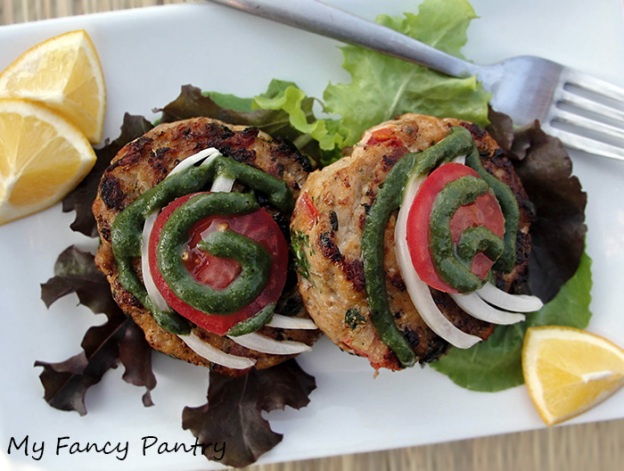
Chapli Kababs, ready to serve!
These patties were so juicy! Chicken tends to get really dry, really fast; but I really think all the water from the veggies helped keep everything tender and moist. This photo isn’t the best shot, but I think you can really see how juicy the kabab is.
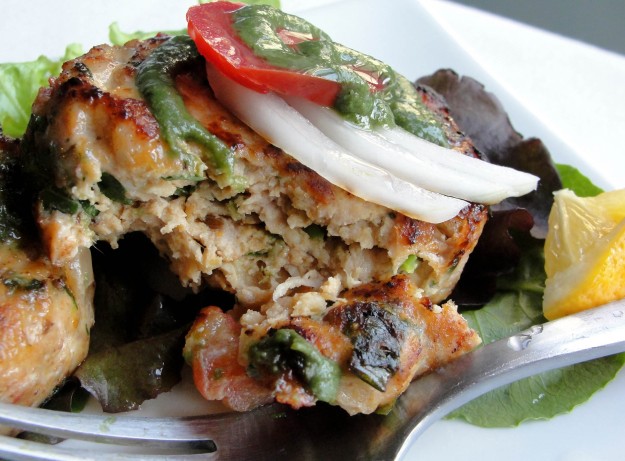
Chicken Chapli Kababs (Pakistani Style)
Makes 9 medium-sized patties
Ingredients:
- 1 lb. skinless and boneless chicken thighs (alternatively, you can use a combo of thigh/breast meat)- minced or ground in food processor
- 1/2 medium white onion- diced
- 2 roma tomatoes- diced
- 2 large green onions- chopped
- 3 serrano chilies (may use jalapenos)- seeded and chopped
- handful corriander leaves (cilantro)- chopped
- 1 tbsp. garlic paste
- 1 tbsp. ginger paste
- 1 tsp. corriander seeds – ground, but not into a powder*
- 1 tsp. cumin seeds- ground, but not into a powder*
- 1 dried red chile- ground to a powder (optional. This will make the patties very spicy)*
- 1 tsp. dried pomegranate seeds- ground*
- 2 tsp. besan flour (chickpea flour–alternatively all-purpose flour would work too)- more if needed to hold the patties together
- salt- to taste
- pepper-to taste
- oil- for frying (I think I used about 4 tbsp. total)
* Note: Any ingredient with a * after it could be substituted by using a pre-made chapli masala mix. This mix may be hard to find, but many Pakistani grocers (and even some Indian grocers) will carry it.
Directions:
- If your meat is not minced, grind it in a food processor until it is broken down and is paste-like in consistency.
- Add all chopped veggies and spices to the meat, and mix together using your hands. Squeeze the tomatoes as you mix everything together, releasing their juices. Mix until everything is well combined.
- Form the meat mixture into patties. Either roll the meat into balls and flatten with your hands or use a burger press/mold.
- Freeze patties on parchment paper for about 15 minutes. They don’t need to be frozen through, just cold enough that the meat sticks together better.
- Heat oil in a large non-stick pan over medium-high heat. Once the oil gets hot, add the patties. Cook in batches so they are not over-crowded in the pan.
- Cook each side for about 2 or 3 minutes, until you notice a nice golden color on the outside. Watch the sides of the patties, once they are no longer pink or raw, your kabab should be nearly done cooking. Total time, about 5 minutes a patty.
- Remove cooked patties from pan and lay on a plate lined with paper towels. Serve immediately, garnished with corriander leaves, tomatoes, raw onion, and lemon wedges. Serve the kababs along with chutney and rice or naan. Enjoy!
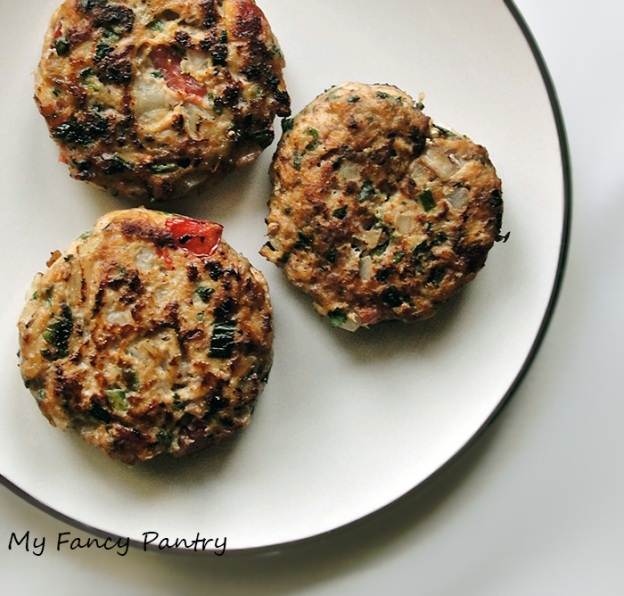
And now, because I shared Piyush’s pretty chappals, I wanted to share some of my own Indian-style footwear! …I mean, what girl doesn’t love shoes?!
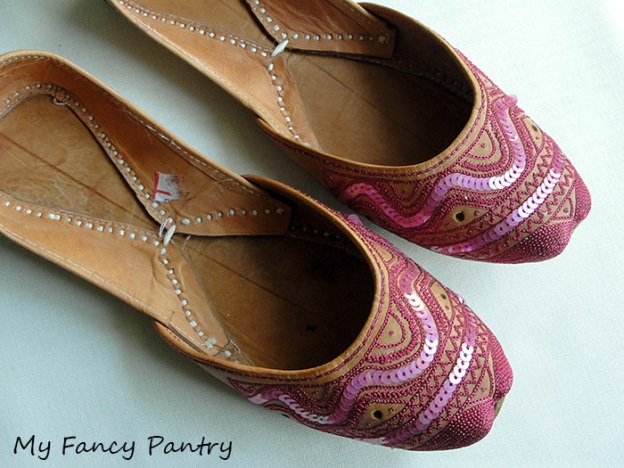
These were bought in Kolkata. I love them, but have not worn them yet. I’m putting it off because I know it’ll be painful (at first…).
These are my favorite, and were purchased in Amritsar, India–near Pakistan.
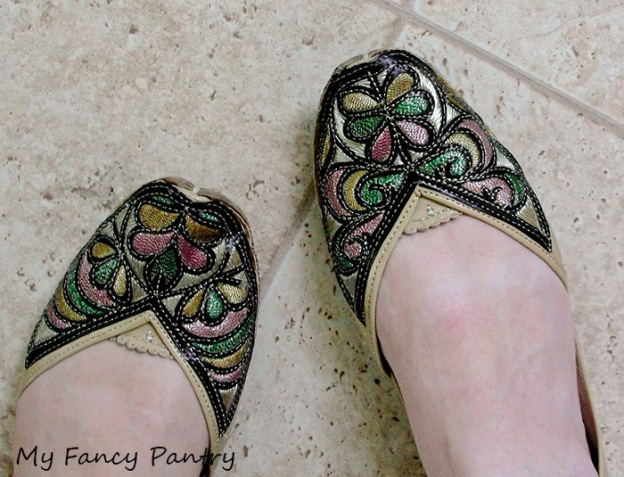
Yes, I really am that white. It’s sad, really. I wish I could tan… I also have hideous feet. They’re ugly, but they’re mine. 🙂
These shoes aren’t called chappals. I can’t remember what they are called, actually. They took about a month to break in (after struggling though some bad shoe bite! They even made my feet swell HUGE), but are now my most comfortable pair of shoes.
…and since I was mentioning Pakistan, I thought I’d share a photo from the India Pakistan boarder. This is as close as I got…You see that big white structure in the back of the photo? That’s the entry to Pakistan.
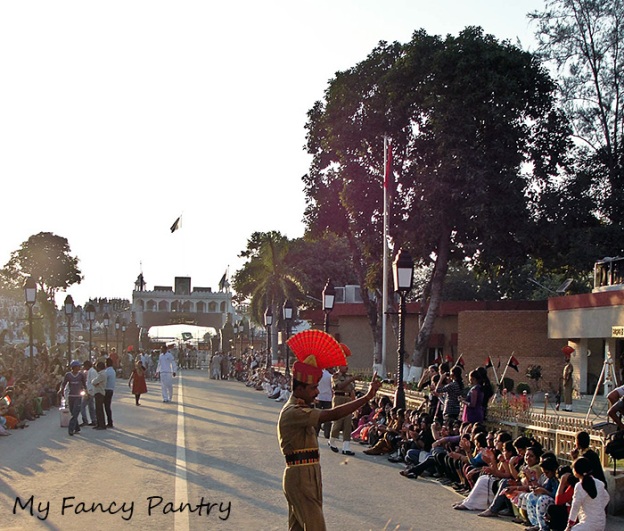
It was incredible to see all the patriotism–from both India and Pakistan. There were tons and tons of people, lots of dancing and music, and even a peace ceremony between both countries. It’s something I feel blessed to have attended, and I hope to attend again (although we’ll get there earlier next time. It fills up fast, and can be really hard to see anything).
If you’d like to see the ceremony, here is a video that explains it pretty good:
http://www.youtube.com/watch?v=YeSX6AZ5xEI
 There are certain foods that have the fascinating ability to transport me to another place and time. Sometimes it’s the taste of a fragrant, freshly baked slice of bread. One bite and I’m nine years old, back in my grandmother’s farm kitchen giggling with my cousins. Oh how I miss my cousins…
There are certain foods that have the fascinating ability to transport me to another place and time. Sometimes it’s the taste of a fragrant, freshly baked slice of bread. One bite and I’m nine years old, back in my grandmother’s farm kitchen giggling with my cousins. Oh how I miss my cousins…
